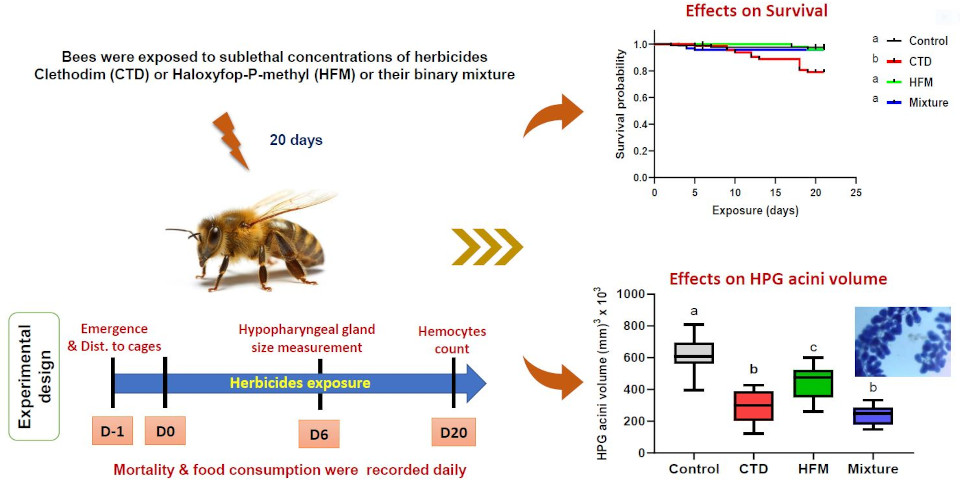Herbicides are the most frequently used pesticides, accounting for more than 60% of all pesticides used in agriculture around the world. Clethodim (CTD) (Vixtol Super® 24% EC), haloxyfop-p-methyl (HFM) (Gallant Super® 10.8% EC), and their mixture (CTD (15%) + HFM (7.5%) (Fine® 22.5% EC) are among the most commonly used post-emergence graminicides in Egypt and worldwide. However, little data on their toxicological effects on honey bees (Apis mellifera L.) is known. In this study, the lethal and sublethal effects of CTD or HFM and their mixture were assessed in the laboratory on foragers and nurse honey bee workers, respectively. In the acute toxicity test, HFM was more toxic to forager workers (LC50 = 0.95 mg a.i./ml) after 96 h of oral exposure, followed by CTD then the mixture which was the least toxic one. In a chronic toxicity test, newly emerged bees were fed sugar syrup that was herbicide-free (control) or sugar syrup that contained a sublethal concentration of HFM (0.2 mg/ml; 1/5 of 96 h-LC50) or CTD (0.6 mg/ml; 1/5 96 h-LC50) or the mixture (0.2 mg/ml; 1/15 96 h-LC50) for 20 days. CTD significantly reduced bee survival and dry body weight compared to non-exposed control bees and bees exposed to HFM or the mixture. Chronic sublethal exposure to these herbicides also caused a considerable reduction in hypopharyngeal glan (HPG) acini volume, severe morphologic alterations, and a deleterious impact on hemocyte account and differentiation. This is the first study of its kind to indicate that herbicides that inhibit acetyl-CoA-carboxylase (ACCase) have a negative impact on honey bee health at sublethal levels.
2404 Members
127 Countries!
127 Countries!










